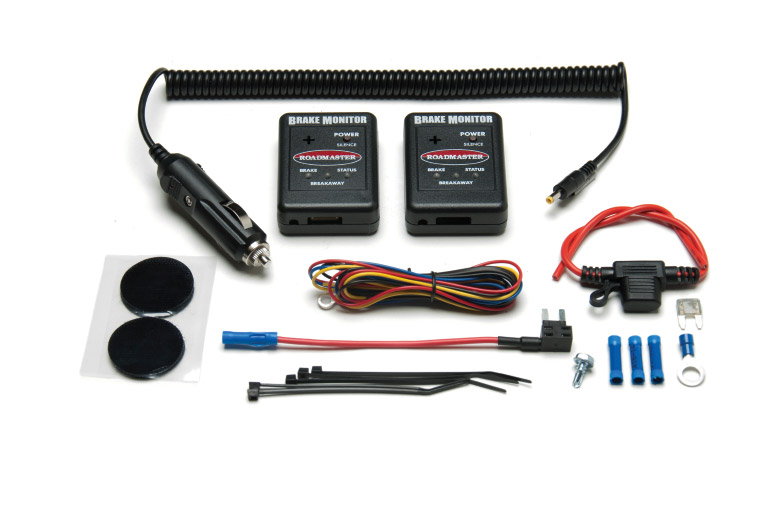The best expert advice on flat towing a dinghy vehicle behind your motorhome
Many of us have towed something at one time or another, whether a small utility trailer, automotive trailer or travel trailer. However, towing a vehicle is a completely different subject, mainly because it was never designed specifically for towing. Confused? Read on.
Why are some vehicles not dinghy towable?
Usually, this has to do with the transmission and/or drive system of the vehicle in question. For example, some drivetrains will only circulate oil through the transmission while the vehicle is running, so the transmission can be damaged if the wheels are spinning but the engine isn’t running. There have even been some instances where the manufacturer did not approve a vehicle for towing simply because it had not performed its own testing to see if dinghy towing would cause damage.
How can I find out if my vehicle is flat towable?
There are a few different ways. If you already have a vehicle you would like to tow, check the owner’s manual index under “towing,” “recreational towing,” “dinghy towing,” “towing behind a motorhome,” or “flat towing.” It will guide you to a section that will either tell you that dinghy towing isn’t approved, or will provide detailed information on how the process should be performed. If you don’t have the owner’s manual, you may be able to download one — or you can consult MotorHome’s annual Dinghy Towing Guides, which date back to 1990 and are available at www.motorhome.com/download-dinghy-guides.
How can I tow a dinghy vehicle safely?
Since the motorhome will be doing the heavy lifting (or pulling), it’s important to find out what its tow rating is. Either the motorhome or chassis manufacturer should be able to provide you with this figure. Then, either consult the vehicle owner’s manual or specifications chart online to determine the vehicle weight, keeping in mind that this is the “base curb weight,” or the weight of the lowest trim level with standard equipment and all necessary fluids, but does not include any gear you might pack into it/on it.
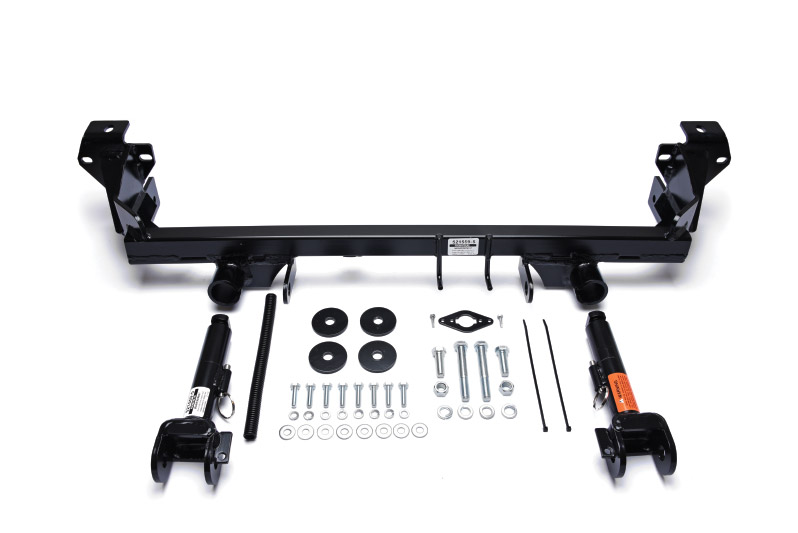
Baseplates like this one from Roadmaster are semi-permanently attached to the dinghy vehicle and are application-specific.
What equipment will be required for dinghy towing?
Regardless of what you plan to tow, it will require a baseplate (which provides a connection point between the dinghy and the motorhome), a tow bar and an auxiliary braking system. The baseplate is vehicle specific, so you should start by visiting the websites of equipment manufacturers such as Blue Ox, Demco and Roadmaster, where you’ll find fit lists based on your vehicle’s year, make and model. You’ll also have to modify the dinghy’s electrical system so that its lights and turn signals operate in tandem with the motorhome while towing. The manufacturers listed previously (and in the source list) all offer products designed for this purpose.
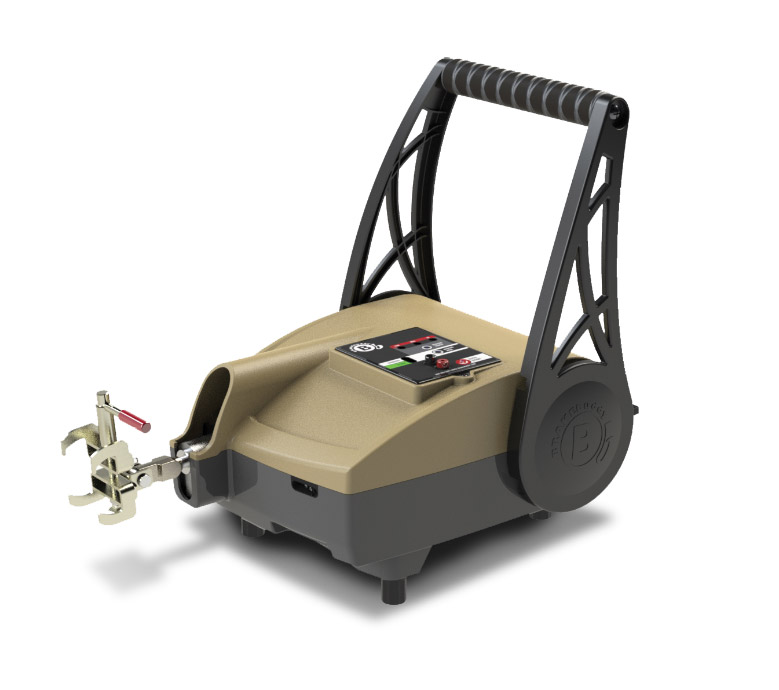
An auxiliary braking system, like the Brake Buddy Classic 3, ensures your motorhome and dinghy setup will stop safely.
Do dinghy towing laws vary by state?
Dinghy towing is legal in all states and Canadian provinces, provided you fit the dinghy with an auxiliary braking system that will apply the vehicle’s brakes when the motorhome’s brakes are applied.
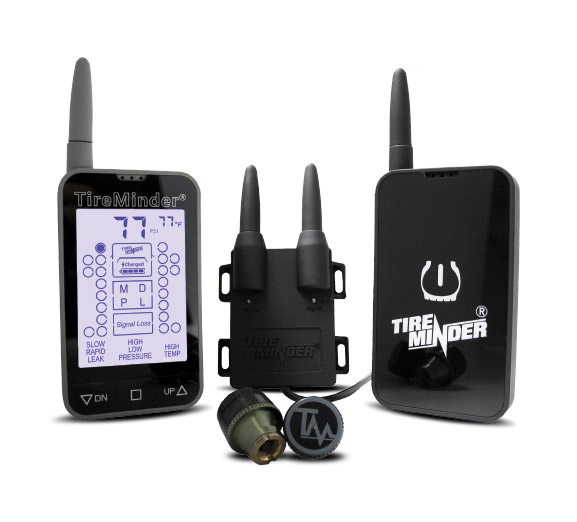
A tire-pressure monitoring system (TPMS) like the TireMinder helps keep tabs on tire pressure while on the road.
How do I know everything is OK while dinghy towing?
Most motorhomes have a rearview camera that can be switched on (or stays on), which will allow you to check on the vehicle as you drive. A tire-pressure monitoring system (TPMS) will help you keep tabs on the dinghy’s tire pressures, while a braking monitor will tell you if the vehicle’s brakes are dragging or otherwise malfunctioning so you can take action before any real damage occurs.
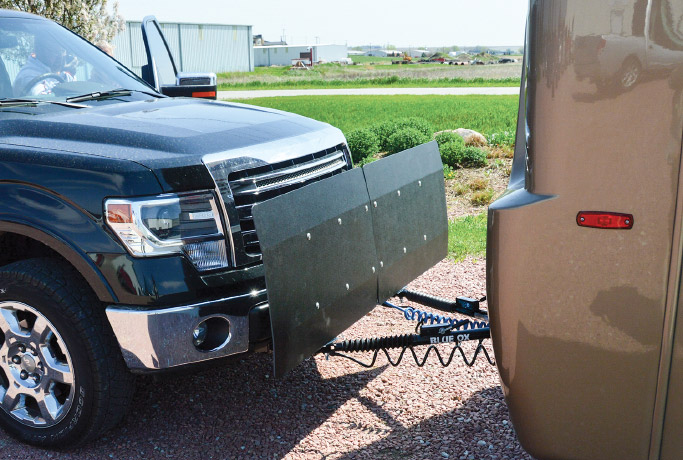
Accessories like the Blue Ox KarGard help protect the dinghy vehicle from potentially damaging road debris.
How can I protect the dinghy vehicle while towing behind a motorhome?
Gravel, road debris, and even tar or paint can cause damage to a dinghy vehicle. A rock shield (Blue Ox KarGard, Roadmaster Defender) can help. Just make sure the vehicle’s owner’s manual doesn’t warn against the use of such products, which can block airflow to the transmission oil cooler (often mounted behind the grille) and potentially cause overheating/damage.
Can I tow more than one dinghy vehicle using the same equipment?
With the exception of the baseplate (which is semi-permanently attached and vehicle specific), the answer is usually “Yes.” A portable auxiliary braking system can be used between vehicles, as can the tow bar, if the rating of the tow bar matches the weight of both vehicles.
How do I prevent the dinghy vehicle’s battery from draining?
Many owner’s manuals instruct the user to turn the ignition key to the “ACC” position so that the steering wheel remains unlocked, but this causes a drain on the electrical system. To prevent a dead dinghy battery, consider a charge line kit. These use the power from the motorhome’s electrical system to keep the dinghy vehicle battery charged while towing.
Will dinghy towing void the vehicle warranty?
If the owner’s manual states that dinghy towing is OK, and you follow the manufacturer’s instructions, then no.
Sources
Blue Ox, 800-228-9289, www.blueox.com
Demco Products, 800-543-3626, www.demco-products.com
Roadmaster Inc., 800-669-9690, www.roadmasterinc.com

